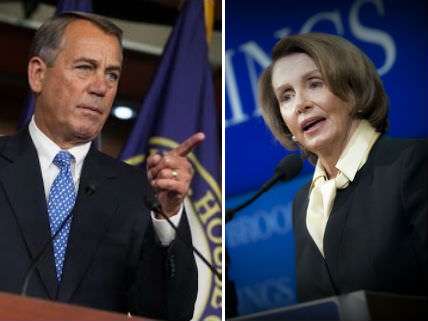Is the New Medicare Doc Fix Plan a Long-Term Debt Increase?

Medicare's physician payment formula—known as the Sustainable Growth Rate—has nagged at Congress for more than a decade. The formula calls for doctors to take a major reduction in Medicare reimbursements, but those reductions never happen. Over the last 14 years, Congress has passed 17 temporary overrides to the SGR in a recurring ritual known as the doc fix. Doctors have urged Congress to ditch the formula, and both Republicans and Democrats have bemoaned the ritual temporary overrides. But no permanent override has ever emerged.
It now appears that this might change. Republican and Democratic leadership in the House are closing in on a permanent fix that just might have enough support from both parties to actually pass. That's because there's something that both sides want in the deal.
Democrats get a permanent end to the SGR and an extension to the Children's Health Insurance Program (CHIP), a Medicaid sister-program that provides health coverage for kids.
Republicans get a small but potentially meaningful entitlement reform in the form of additional means testing for Medicare, and higher copays in Medigap.
"From our perspective this is a good start on addressing big entitlement issues in a fair and responsible way," an anonymous senior House Republican aide told TPM's Sahil Kapur. "And that's what we came here to do. That argument appeals to a lot of our guys."
The biggest point of resistance so far has come from conservatives who aren't happy that the deal isn't fully paid for inside the 10-year budget window. A permanent override of the cuts called for by the SGR means formally agreeing to spend a lot of money that isn't technically in the budget now (although history strongly suggests that those cuts won't ever come to pass).
Those in favor of the deal argue that it's not only a productive entitlement reform, but a net savings over the longer term; no, it won't be paid for over the Congressional Budget Office's decade-long scoring window, but over time, the savings from means testing will swamp the cost of ending the SGR and its cuts.
To the extent that this is true, it's a fairly strong argument in favor of taking the deal. But the problem is that it's not at all clear that the longer-term savings would offset the cost of the fix. We don't have official numbers yet, or complete details from House leadership, but the Committee for a Responsible Budget (CRFB) just released an analysis concluding that over 20 years, the plan would actually increase overall debt levels, including the added costs of interest, by about $400 billion. Yes, some savings would accrue due to the means testing, but the total cost of ending the cuts, and continuing to increase physician Medicare rates every year, would be larger than the savings. And that's using generous savings assumptions that the CRFB thinks overstate what the plan would actually produce, meaning the total debt increase could be even higher than estimated.
If this is correct, it puts a serious dent in a big—perhaps the biggest—reason to support the plan. Obviously we don't have the final details or official numbers, so we'll have to wait and see what emerges. But this is a good reason to hold off on enthusiasm for the plan. The more I read about the deal, the less I like it.



Show Comments (20)